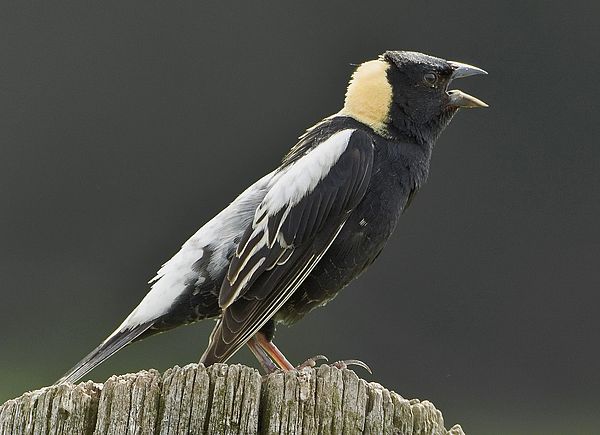Bobolink- Long Distance Voyager
Article by Ava Steenstrup
In his spring finery, the male Bobolink has been described as looking like a backward tuxedo with solid black upper-parts, a black face, a pale-yellow nape, white shoulder feathers and rump, and all-black under-parts. He is unmistakable in breeding plumage until fall migration when he molts into a female-like plumage of buff-brown with a white streaked back and plain buff under-parts.
The bubbling song of the Bobolink ushers in spring across grasslands and agricultural fields across the northern United States and southern Canada. The species name of the Bobolink, oryzivorus, means "rice eating" and refers to this bird's penchant for wild and domesticated rice and other grains, especially during migration and winter. Bobolinks mainly eat seeds (such as rice and weed seeds), insects and spiders.
Bobolinks and other grassland birds are suffering largely due to habitat loss from housing development and use of pesticides. In addition, cattle grazing and earlier hay cuts results in loss of birds and nests, as the May to July nesting season for these species overlaps with these agricultural activities.
Did you know? The Bobolink is a champion long-distance Neotropical migrant, undertaking one of the longest migratory trips of any New World songbird to its wintering grounds. Bobolinks travel roughly 12,500 miles round trip from their breeding range in North America (which extends across southern Canada and northern United States) to their wintering grounds in southern South America and back each year.

